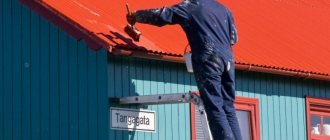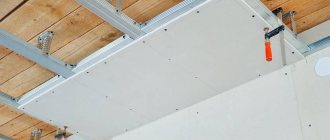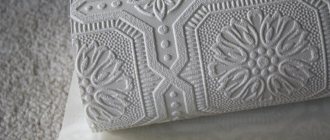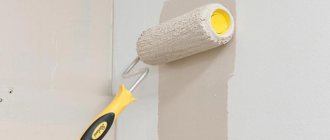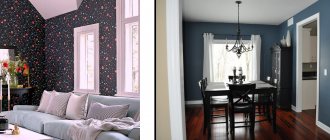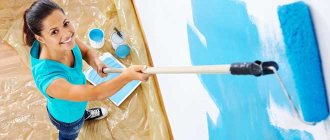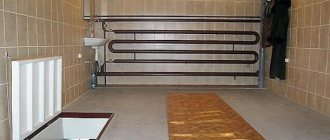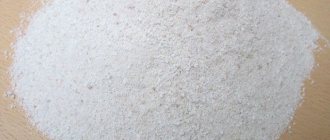What needs to be taken into account when calculating
Not only people associated with the exact sciences should be careful and pedantic in determining the correct repair costs. Anyone who decides to change the interior of an apartment must take seriously the calculations of the required materials. The remains have no further use and, given the short shelf life in open containers, they are thrown away.
If you don’t buy enough wall paint, it will be difficult to choose a shade later. The coincidence of numbers marking a color does not always guarantee an exact match to the shade. The determining factor for the same tone is the product lot number.
All the necessary information about the method of use is written on the jars. Including the consumption for painting 1 square meter of wall area. It is difficult to navigate these data because average figures are given, without the specifics of each repair.
When calculating the amount of paint for decoration, a number of factors must be taken into account:
1. Initial surface color. If the wall is painted in a bright tone, then the intended light shades will need to be laid in several layers. And any shade will go well with white. 2. The tool that will be used during work – a brush, roller or paint sprayer. 3. The degree of smoothness of the walls. Porous and rough surfaces will require increased consumption. 4. Paint composition. With additional tinting, the amount of coverage required may increase.
A careful study of all the details of applying paint to the walls will ensure the correct calculation and save money, which is already spent in large quantities during repairs.
Why is it worth calculating paint consumption in advance?
The amount of material required must be calculated in advance, before the start of repair work.
If you do not resort to preliminary calculations, you may encounter the following problems:
- there is excess paint left or, conversely, there is not enough material;
- The required color is not available for sale or the batch has run out (the color may differ in another batch);
- the paint from the previously purchased manufacturer is no longer available;
- the surface texture required the application of an additional layer;
- the flow rate inside and outside turned out to be different, etc.
What tools are needed?
The amount of paint needed depends on the painting device used to apply the layers to the wall. One or more tools are used for these purposes:
1. Brush – applies the composition in a thick layer with inevitable smudges. The most expensive painting method with the maximum consumption of finishing coating. 2. Roller - reduces the time of painting work, therefore it is used for painting a large area. Paint is used sparingly. 3. Spray gun - evenly distributes the paint over the entire surface of the wall and quickly applies a thin layer. Option for lean renovation. 4. Sponge – used for decorative finishing of the coating. Increases consumption because when decorative painting a thick layer is applied to the wall.
Typically, several types of tools are used in painting work. This is due to the presence of corners, heating radiators and types of painting. All these nuances must be taken into account when calculating the amount of paint.
Detailed instructions for calculating dye consumption
You can calculate the amount of dye either manually or automatically. In both cases, you will need initial data that will need to be substituted into a formula or empty cells of a special calculator.
Examples of calculations
Example 1. Painting a surface of 15 m² in 2 layers.
| Paint type | Safety factor per 1 m² | Consumption, l |
| Water-dispersed | 0,12 | 15 x 0.12 x 2 = 3.6 |
| Acrylic | 0,15 | 15 x 0.15 x 2 = 4.5 |
| Oily | 0,2 | 15 x 0.2 x 2 = 6 |
Example 2: Painting a surface area of 24 m². The manufacturer indicated paint consumption at 120 g/m². We multiply the area by the consumption and get 2.88 kg. 2 layers will require up to 6 kg of paint.
Example 3. Let's clarify the calculations. We divide the hiding power (120 g/m²) by the dry residue (55%) and multiply by 100%. We obtain the required volume of paint per 1 m² (218 g). Next, the result must be multiplied by the total area (24 m²). We get a little more than 5 kg.
Calculator
If you doubt your own calculations, you can use a calculator. You just need to enter the data and the computer will display the result. Most of these services can be found freely available on construction sites. Online calculations are a kind of specialist consultation, which does not require financial investments.
The wall paint consumption calculator contains the following parameters:
- type of paint;
- surface type;
- length;
- width;
- height.
Separately, you can calculate the paint for the ceiling and floor. Parameters may vary between online programs, so it’s best to always leave a small margin.
Original color and surface structure
The initial shade of the surfaces is of primary importance. It is enough to cover white walls with one light layer in order to refresh the color or hide the translucent patterns of the base. If you choose bright or dark colors, you will have to paint it two or more times.
Hiding power is the ability of a pigment, when painted evenly, to cover the color of the base and make the differences between contrasting areas invisible.
According to the standards of the Russian Federation, the coverage coefficient is determined in grams of pigmented material required to cover 1 square meter of surface in one layer. According to this characteristic, there are 4 classes. The lower the number, the better the new shade will cover the previous coating. Accordingly, the consumption of finishing material for class 1 paint will be minimal.
A well-prepared surface will require less paint. If whitewash remains on the walls, it must be thoroughly washed off with plenty of water. Remains of old coatings, plaster, glue - everything must be removed. The clean surface should be sanded and coated with a primer, which will save consumption.
If you do not treat the walls with a primer, the amount of product will increase significantly:
• on wooden surfaces – up to 10 percent; • unprimed plaster – by 15 percent; • for drywall – by 40 percent;
A lot of paint and varnish material will be required to cover the embossed wallpaper. Costs will double compared to treated concrete walls.
The standard paint consumption is in the range of 120-140 grams per 1 square meter of surface when painting in one layer. The lighter the shade, the less dense the consistency. In this case, the consumption increases because you have to paint several times.
What to consider when making calculations
When making calculations, the following criteria are taken into account:
- room area;
- type of original surface;
- tool or method of application;
- type of paint and its basic characteristics.
Room area
To calculate the amount of paint, it is necessary to determine the area of the surfaces to be treated. To do this you will need to measure the length, width and height of the walls.
If only the walls are to be painted, then the total area of the surfaces to be painted is calculated by multiplying the perimeter by the height. Knowing the source data, all that remains is to substitute them into the formula:
P = (a+b) x 2; S = P x h.
According to SNiP IV-2-82 for finishing works, the area of window and door openings is calculated from the outer outline of the frames, and then subtracted from the area of the walls.
Surface texture and material
How many liters of paint will be used during painting depends on the type of surface.
From the point of view of tactile perception, the substrate can be of 2 types:
- smooth;
- rough.
The first is less porous, so its absorbency will be lower. It is no coincidence that the base is puttied and sanded before painting. But sometimes the relief texture becomes a decorative element.
Main surface types:
- cement-concrete (brick, plaster, cinder blocks, etc.);
- metal;
- wooden;
- plastic;
- paper
Painting concrete, drywall, untreated wood, and wallpaper for painting will require more material. Metal, plastic, primed wooden base will require less cost.
When painting metal, you will need less paint than when painting drywall.
Powder paint is often used to process complex terrain and metal structures, although its application requires special equipment (pneumatic tools and a polymerization chamber).
Good material for painting:
- small parts (machine disks, pipes);
- metal furniture (cabinets, racks);
- metal fences and stairs;
- household appliances (refrigerators, cookers, washing machines, etc.).
The paint protects against corrosion and provides electrical insulation. This composition is not used on wood and plastic, because the melting temperature in the chamber reaches +200° C. Powder paint consumption is 100-140 g/m².
Tools used
Various tools are used in painting:
- brush;
- roller;
- spray gun (spray gun), etc.
The choice depends on the scope of work. A roller and a spray gun are suitable for processing large surfaces. When painting small parts, window frames and doorways, it is more advisable to use a brush.
The spray gun uses paint and varnish most economically. The principle of its operation is characterized by a non-contact method of application. A special gun sprays the paint under pressure and allows it to be evenly distributed. An aerosol can works similarly.
To avoid paint getting onto adjacent surfaces, use masking tape. When working with spray guns, you may need a mask and goggles. Cotton gloves will protect your hands.
The spray gun uses paint sparingly.
Original surface color
The original color of the coating also matters in paint consumption. If the substrate and paint are light, it will be easier to achieve uniformity.
It is more difficult to paint over a dark base, for example, with white paint. More layers will be needed.
Careful preparation of the substrate for painting will help reduce effort and costs. If the old coating remains, it is better to remove it, sand the surface and prime it. The extra hours of repair will pay off in savings on material consumption.
Dye color
The shade of the pigment, like the color of the substrate, contributes to the cost. The density of light dye is less, so it is consumed faster. If white paint weighing 1 kg can cover up to 10 m², then the same amount of black paint will cover a space twice as large (up to 20 m²).
As an example, the table shows the dependence of oil paint consumption on color.
| Color | Surface area covered by 1 liter of paint, m² |
| Red | 5-10 |
| Yellow | 5-10 |
| White | 7-10 |
| Green | 11-14 |
| Blue | 12-17 |
| Brown | 13-16 |
| Black | 20 |
Type of composition
Depending on the composition, paints are used for interior and exterior finishing work. Some are more suitable for interior solutions, others - for updating facades.
The composition of paints and varnishes includes the following components:
- binder base (film formers);
- pigment;
- fillers (microcalcite, talc, koalin, chalk, etc.);
- additives (antiseptic, fire retardant, etc.);
- solvents (water, white spirit, etc.).
The more components, the higher the quality of the product. Paint can contain up to 20 components.
Pigment is one of the components of paint.
Covering power of the coloring composition
The ability of paint to create an opaque coating is called hiding power. It is checked visually and experimentally.
The traditional test is the “chessboard”. A substrate of squares of dark and light shades is coated with dye. At the end of the test, the base should not be visible. The difference in cell brightness (contrast ratio) will help determine coverage.
There is no need to conduct experiments yourself, because... this indicator is indicated on the bank. Depending on the manufacturer, this pigment characteristic can be expressed in g/m² or l/m².
The covering characteristics of the composition are divided into 4 covering classes:
- 1 class (overlapping ability – 99%);
- 2nd grade (98-99%);
- 3rd grade (95-98%);
- 4th grade (below the 95% mark).
Buying paint with a low hiding power will not save money. And not all manufacturers put such markings; they often indicate only the consumption of the composition for a particular surface. In this case, the spread in the range of indicators will be significant.
Dry residue
The solid paint layer that remains after the base has dried (the volume of non-volatile substances) is called dry residue. The higher the number, the more environmentally friendly the material is, meaning it contains fewer solvents (volatile organic compounds, or VOCs). The use of paints and varnishes with low solids levels may increase the concentration of ozone in the atmosphere. All this has negative consequences for the health of people and animals. The development of respiratory diseases is especially dangerous.
The table shows the values of non-volatile substances.
| Dry residue indicator | Percentage content, % | Thickness of 1 layer, microns | Optimal number of layers | Environmental impact |
| Low (LS) | 40 | 20 | 3-4 | Negative due to high content of volatile substances |
| Average (MS) | 50 | 30 | 2 | Moderate exposure, less volatiles |
| High (HS) | 60 | 10 (the second is applied 40 microns thicker) | 1,5-2 | Minimum |
| Ultra High (UHS/VHS/HD) | 80 and above | 5 (first layer – thin; second – thick, up to 50 microns) | 2 | Minimum volatile substances |
Today, it is prohibited by law to produce products with low residue levels. The material costs in this case turn out to be unreasonably high, not to mention the environmental consequences. To achieve optimal coating thickness, up to 4 layers are required.
The most environmentally friendly materials are labeled “Low VOC” (minimum volatile substances). But also from a practicality point of view, paints with high residue rates are able to cover a larger surface. In addition, the low solvent concentration allows for fewer layers to be applied. In this case, even 1 layer will be enough to form a durable film.
Today in Russia the production of paints with low solids is prohibited by law.
Dye Density
Density is calculated using the formula: p = m/V, where m is the mass of the substance, and V is its volume.
For different types of paints and varnishes, the density varies from 0.9 to 1.6 kg/m³. For example, for PF enamel this figure is 0.9-9.2 kg/m³, and for acrylic paint - 1.45-1.55 kg/m³.
The density of the dye also depends on external factors (air temperature, pressure, humidity level) and the mass of the color pigment.
Types of paints
The composition of the finishing product affects the amount of material for covering the walls. The choice in favor of a certain type of color depends on the structure of the surface to be painted. Concrete walls are often coated with acrylic paints, and enamel is chosen for wooden and metal surfaces.
Acrylic
A universal material of varying consistency for easy coloring. It is used not only for internal, but also for external work. Does not fade when exposed to sunlight. They produce several options for acrylic mixtures: • matte; • semi-matte; • glossy.
Acrylic-based coatings, which are suitable for any surface, are considered a reasonable option. For example, Amphibolin has a high degree of protection against aggressive atmospheric influences, 2nd class of hiding power and 1st class of resistance to cleaning agents.
To add color, acrylic mixtures can be tinted with special pastes. In this case, the tone must be applied to the entire volume at once in order to prevent differences in shades. Depending on the color saturation, the coating is applied in two or three layers to the primed surface.
Some acrylic paints, such as AcrylFassadenfarbe, can be thinned with water. They have a low odor and high environmental performance. At the same time, the products are resistant to light, precipitation and wet abrasion.
Water-based
The coating is non-toxic, therefore it is often used for interior wall decoration. The main properties of water-based paints are formed by polymers. Emulsion suspensions are easy to apply and have several degrees of durability and colors. For wooden surfaces, the consumption of the water-based mixture will be significantly less than for concrete bases.
Oily
Currently rarely used for painting work. The basis of oil paints is drying oil, which polymerizes in air and creates a semi-solid mass. The drying time for each layer is at least a day, and only after that the next layer is applied. The coatings are short-lived and soon the paint begins to peel off.
Consumption rates for different types of dye
Depending on the composition of the material, paint consumption per square meter can vary significantly.
The consumption rate will depend on several indicators:
- Covering power, or covering ability of a pigment. The substrate must be completely hidden, without veins or gaps in the surface on which the coating was applied. The fastest results can be achieved with paint with 1st class of hiding power.
- Viscosity (thixotropy). To reduce material consumption, solvents (water, white spirit, etc.) are added to the composition. At the same time, the high viscosity reduces the amount of drips during application.
- The thickness of the layer that will remain after the evaporation of volatile substances.
- Texture (smooth or rough) and absorbency of the substrate. Concrete and brick, unlike primed wood and metal, will require 10% more coverage.
- Tools. Paint consumption when working with a roller is higher than with a brush. For rough surfaces, you will need a long-haired tool.
- Colors. Light colors are easier to cover than dark ones to lighten. In the latter case, the number of layers can be increased.
- Working conditions (air temperature, humidity). At high humidity, the substrate takes longer to dry, but material consumption is reduced. In a dry and warm room, more solution may be required.
Paint consumption depends on its texture.
Oil based paint
Using oil paint is the most budget option. Average consumption for 1 layer is 120 g/m². The amount depends on the type of surface on which the composition will be applied. A rough base of material will require more material. You also need to take into account the color of the coating. White paint, for example, wears out faster.
The main components of oil paint are drying oil (binder), pigment, fillers (barium sulfate, barite, talc).
Drying oil can be:
- natural (from vegetable, flax or hemp oil);
- artificial or without oils (carbonal, synthol);
- mixed, i.e. with the addition of solvents (oxol).
When in an oil or similar synthesized substance, the mineral-based pigment settles at the bottom of the jar. Therefore, the solution should always be stirred before use.
The advantages of this type of coating include:
- low cost;
- natural ingredients in the composition;
- resistance to temperature changes;
- hydrophobicity;
- durability.
Among the disadvantages are:
- Strong smell;
- drying time;
- the possibility of cracks forming on the surface;
- decrease in color intensity under the influence of external factors;
- air impermeability through the coating.
Oil paint is applied in 2 layers. If necessary, their number can be increased. The next layer is applied after the first one has completely dried (after 24 hours). If the paint is still sticking, then you should wait a few more hours before starting work.
Oil-based paint is suitable for all types of surfaces: wood, metal, concrete, brick, plaster, plastic, glass. It is traditionally used for painting entrances, cosmetic repairs in government agencies, etc.
Oil paint is suitable for all types of surfaces and must be applied in two layers.
Alkyd enamels
This dye is based on alkyd resin and solvent. The material consumption per layer will average 100-130 g/m².
The paint has a high degree of resistance to weather conditions. It can withstand high humidity and high temperatures. The surface treated with this composition can be washed, so it is suitable as a floor paint (for example, PF-253).
The type of final coverage depends on your choice and can be:
- matte;
- glossy;
- semi-matte.
PF-115 enamel based on artificial (pentaphthalic) drying oil has become widespread. It has a rich color palette. Consumption – from 100 to 200 g/m². It will take less paint to process a metal surface (up to 110 g/m²), wood will absorb more (up to 180 g/m²). If the composition has thickened, then it is diluted with solvents (white spirit, solvent, etc.).
The durability of the coating allows the enamel to be used for road markings. To do this, alkyd-styrene resins are added to the composition. Such materials are marked MS. For painting cars, paintwork materials based on glypthal varnish (GF) are used. Melamine-alkyd mixtures (ML) can withstand particularly high temperatures.
Due to the durability of the coating, alkyd paints are used for road markings.
Acrylic-based compositions
Acrylic enamel consists of a dispersion of acrylic resins. It belongs to water-dispersion paints. In addition to water and polymers, it contains pigments and various additives that improve the properties of the material. The coating hardens due to the polymerization of resins.
Acrylic paint on metal works well on rust. The coating contains both the primer and the coloring agent itself. But the main advantage is a corrosion converter that slows down the oxidation process.
Acrylic-based compositions can be used indoors and outdoors. Among water-dispersed ones they are the most economical. The consumption will be 115-120 g/m².
When painting a metal surface with rust, acrylic enamel works well.
Water-based paint
Water-based paint contains pigments and particles of polymers or minerals. It is used for painting almost any prepared surface. Unlike oil paint, water-based paint dries faster. The second layer can be applied after 1.5-2 hours.
The composition is suitable for rooms with high humidity (bathroom, swimming pool). It’s easy to calculate consumption based on the manufacturer’s data. On average, 1 liter is enough for 10 square meters. m. Some varieties are able to cope with a volume of almost twice as much - up to 18 square meters. m.
For 1 layer you will need up to 150 g/m² (average). For interior finishing, the consumption will be less than for exterior work. For wallpaper with a complex texture, material costs may be higher.
Depending on the type of water-based solution, per 1 sq. m, different amounts of material are consumed. In terms of consumption, the first place is occupied by the latex variety and polyvinyl acetate. The lowest indicator is for acrylic and silicone paints. Average values for silicate.
Water-dispersed compositions, which include water-based emulsion, fit well on wallpaper for painting. A liter of material can cover a surface of up to 8 m² on average. Before applying the composition to glass wallpaper, it is better to use a primer. This will reduce consumption. Requirements for preparing the base may be indicated on the packaging.
Water-based compositions are used in the production of fire-retardant paints and varnishes. They are used for wood, metal, cable coverings. For example, the ability of such compositions to reduce the flammability of wood and materials based on it is tested using a special “Ceramic Pipe” installation. If combustion continues after the end of the test or charring of the entire sample occurs, then the fire retardant function in this case is considered ineffective.
Due to high humidity, when painting bathroom walls, it is better to use water-based paint.
Facade paint
Exterior paint is commonly called façade paint. It must withstand both temperature changes and precipitation. To do this, it must contain special compounds that will preserve the coating for as long as possible.
Facade paints include:
- organosoluble (oil paint, alkyd enamel, etc.);
- water-soluble (acrylic, silicone, latex, etc.).
The first group is mostly used for outdoor work, since the organic solvents in the base of the material are quite toxic. Paints of the second type are also used for interior decoration. They are less harmful to health and dry faster.
The durability of façade paint, consumption during application and quality of finishing will largely depend on atmospheric conditions. At low temperatures (less than +5°C) the coating may crack. In hot weather, the volume of composition used will increase. The air temperature should be above +15 °C, humidity – up to 80%.
Depending on the type of dye and the number of layers, the consumption will be 160-250 g/m².
Facade paint can withstand temperature changes and precipitation, and its consumption depends on the type of dye.
How to do the calculation yourself
To correctly calculate the amount of paint, you need to know two parameters - the area of the surface to be painted and the consumption rate per 1 square meter. It is easy to determine the area of the walls using a tape measure and simple mathematical formulas:
1. Measure the length (a) and width (b) of the room in meters and determine the perimeter (P) of the room using the formula P = (a+b) × 2. 2. Measure the height of the walls (h) or the distance from the floor to the painting line . 3. Calculate the area (S) to be painted using the formula S = P × h. 4. Take into account all door and window openings, calculate their total area and subtract them from S walls.
The resulting value is used to determine the required volume of material. To do this, the area of the walls without openings must be multiplied by the consumption rate, which is indicated on the packaging.
Example
Room length – 4.2 m Room width – 3.4 m Wall height from floor to ceiling – 2.6 m Window opening – 1.5 × 1.7 m Doorway – 0.8 × 2.0 m Consumption per 1 sq. m – 120 grams
P = (4.2 + 3.4) × 2 = 15.2 S = 15.2 × 2.6 = 39.52 S windows = 1.5 × 1.7 = 2.55 S doors = 0.8 × 2.0 = 1.6 39.52 – (2.55 + 1.6) = 35.37 120 × 35.37 = 4 244.4 grams or 4.244 kg
To paint the walls in a room 3.4 m wide, 4.2 m long and 2.6 m high in one layer, you will need 4.2 kg of paint.
Taking into account errors
For an accurate calculation, additional parameters must be taken into account:
• dry residue – the amount of substances remaining on the dried surface; • composition density – how much paint is in 1 cubic centimeter; • hiding power is an indicator of the color coverage of the base.
To determine the actual paint consumption, use the formula:
(hiding power / dry residue) × 100 The resulting value is multiplied by the area of the walls.
Example: Painting area – 35 sq. m Covering capacity – 130 grams per 1 sq. m Dry residue – 60% (130 / 60) × 100 = 216.6 grams per 1 sq. m 216.6 × 35 = 7,581
To paint 35 square meters in one layer you will need 7.6 kg.
With an increase in the amount of solid fillers compared to polymers, the density of the paint and varnish material increases. The compositions lose their plasticity and increase consumption. It is allowed to dilute the products with special compounds, depending on the type of paint, to reduce the density.
Determining the amount of paint for the ceiling
How to calculate the right amount of paint for the ceiling? Painting the ceiling requires a little more material than vertical planes. This feature lies in the location of the surface relative to the finish. You will need the following algorithm for determining the volume of paint for the ceiling:
- Calculate the surface value according to mathematical formulas. You need to first measure the length and width of the ceiling.
- The calculated volume is determined in accordance with the consumption instructions indicated on the packaging.
- It is better to multiply the required amount of paint by two, since in order for the surface to acquire the most aesthetically attractive appearance, it will require application in at least two layers.
Does the application method affect paint consumption?
The most economical method is to apply paint with a special spray gun, with which the paint is sprayed. As a result, a neat thin film of paint remains on the surface.
The most wasteful method of application is applying paint with a brush (different layer thicknesses, drips, unevenness). The above factors increase consumption. The ideal option would be paint rollers, they are accessible and inexpensive, easy to clean, and the paint is economical in consumption and goes on smoothly.
How to choose a plinth
In a hardware store, PVC, wooden and other skirting boards are presented in the form of two-meter strips. After calculations, the cornice can be cut to size directly in the store according to the calculated dimensions. This method will allow you to get by with a minimum of waste. But in order to ensure that errors in dimensions are avoided, it is recommended to cut each plank 50-70 mm longer. The spare length will come in handy when cutting skirting boards in place. Before purchasing and cutting baguettes, discuss all the details of installation with the consultants of a store or online resource, since skirting boards can be sold in different lengths, widths, thicknesses, from different materials and with different patterns and reliefs.
We paint different surfaces
The consumption of water-based paint per 1 m2 of wall largely depends on the material of the surface that we will paint. So, when applying the composition to wallpaper, there will be a large consumption, since the paper absorbs the water-based emulsion well.
For painting on plaster, material costs will be different. It all depends on the texture of the surface. If the coating is smooth and even, then less coloring agent will be used. But for processing, for example, fur coat or bark beetle, which have a very porous surface, more material will be consumed. But waterproof coatings will absorb less.
Advice: A surface made of polystyrene foam or wood, gypsum boards will absorb more of the paint composition due to their loose structure, but for painting metal or concrete with a denser surface, the costs will be lower.
To paint a facade, the cost of painting material will be much higher than when working indoors. Due to the air, wind and humidity outside, the paint dries quickly, so uneven coverage is possible. And this requires an additional layer to be applied to the facade walls.
Rules for calculating paint.
You can accurately calculate the paint after determining the area that will be painted, its location, and the type of paint used. To carry out calculations you need to know 2 values:
- Standard consumption for a certain type of paint;
- Surface area to be painted.
How to calculate the area has already been written above, but paint consumption is calculated as follows: you need to divide the area by the standard consumption. We will end up with a figure for the amount of paint that will need to be applied in one layer.
